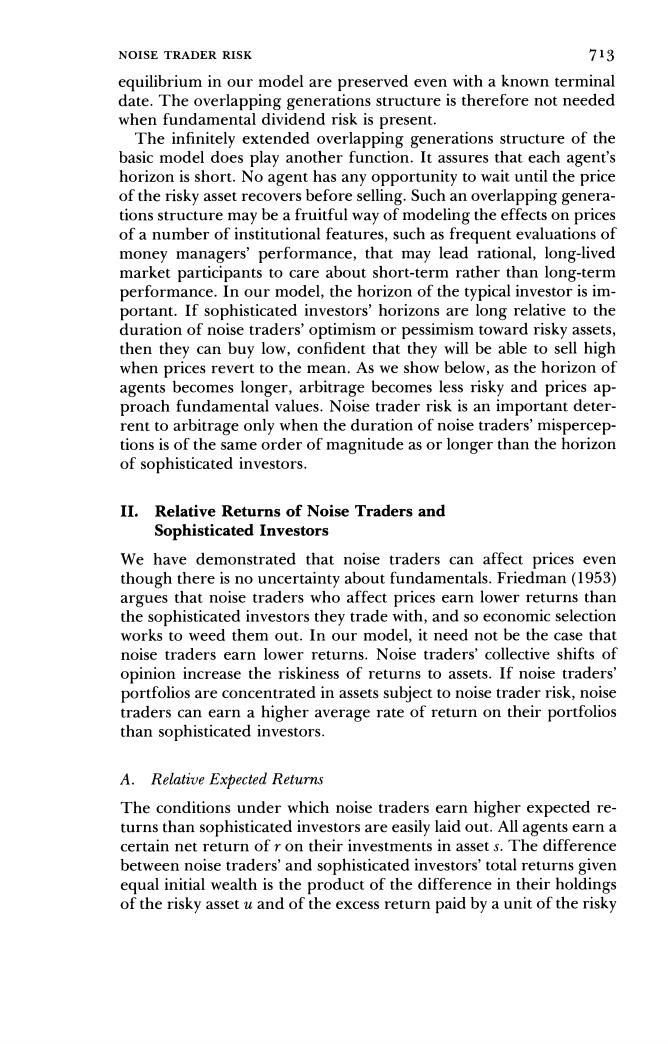正在加载图片...

NOISE TRADER RISK 713 equilibrium in our model are preserved even with a known terminal date.The overlapping generations structure is therefore not needed when fundamental dividend risk is present. The infinitely extended overlapping generations structure of the basic model does play another function.It assures that each agent's horizon is short.No agent has any opportunity to wait until the price of the risky asset recovers before selling.Such an overlapping genera- tions structure may be a fruitful way of modeling the effects on prices of a number of institutional features,such as frequent evaluations of money managers'performance,that may lead rational,long-lived market participants to care about short-term rather than long-term performance.In our model,the horizon of the typical investor is im- portant.If sophisticated investors'horizons are long relative to the duration of noise traders'optimism or pessimism toward risky assets, then they can buy low,confident that they will be able to sell high when prices revert to the mean.As we show below,as the horizon of agents becomes longer,arbitrage becomes less risky and prices ap- proach fundamental values.Noise trader risk is an important deter- rent to arbitrage only when the duration of noise traders'mispercep- tions is of the same order of magnitude as or longer than the horizon of sophisticated investors. II.Relative Returns of Noise Traders and Sophisticated Investors We have demonstrated that noise traders can affect prices even though there is no uncertainty about fundamentals.Friedman(1953) argues that noise traders who affect prices earn lower returns than the sophisticated investors they trade with,and so economic selection works to weed them out.In our model,it need not be the case that noise traders earn lower returns.Noise traders'collective shifts of opinion increase the riskiness of returns to assets.If noise traders portfolios are concentrated in assets subject to noise trader risk,noise traders can earn a higher average rate of return on their portfolios than sophisticated investors. A.Relative Expected Returns The conditions under which noise traders earn higher expected re- turns than sophisticated investors are easily laid out.All agents earn a certain net return of r on their investments in asset s.The difference between noise traders'and sophisticated investors'total returns given equal initial wealth is the product of the difference in their holdings of the risky asset u and of the excess return paid by a unit of the risky